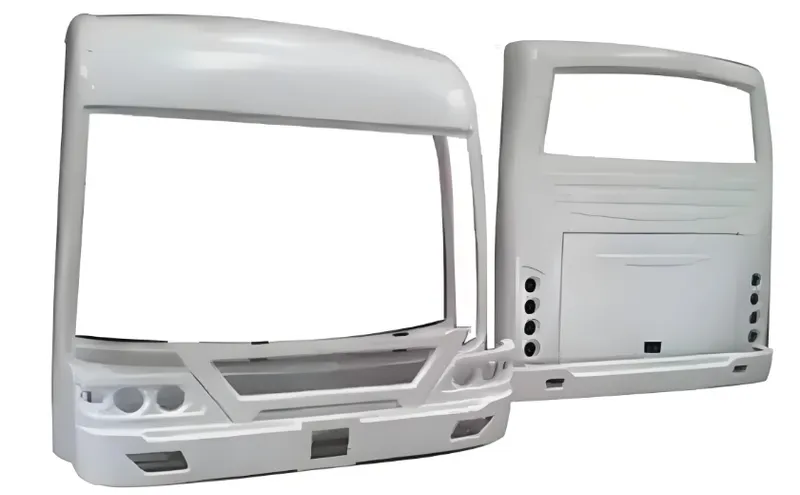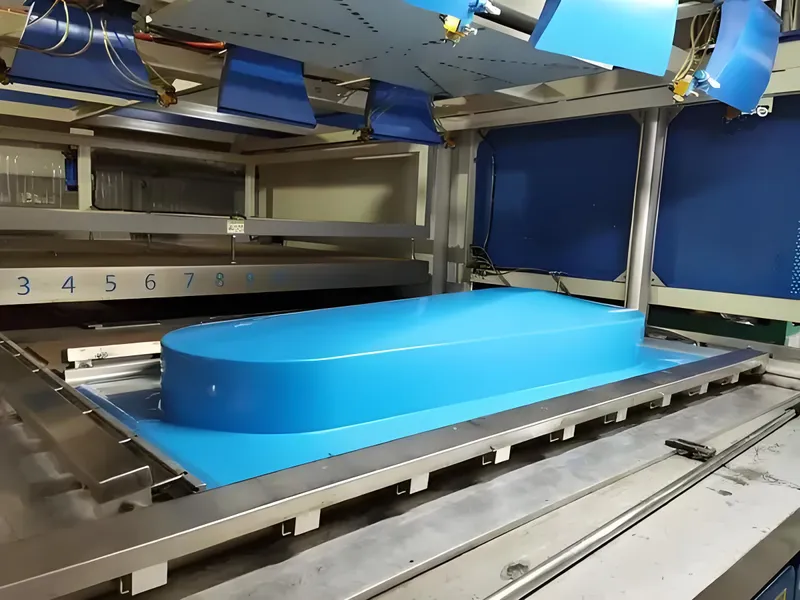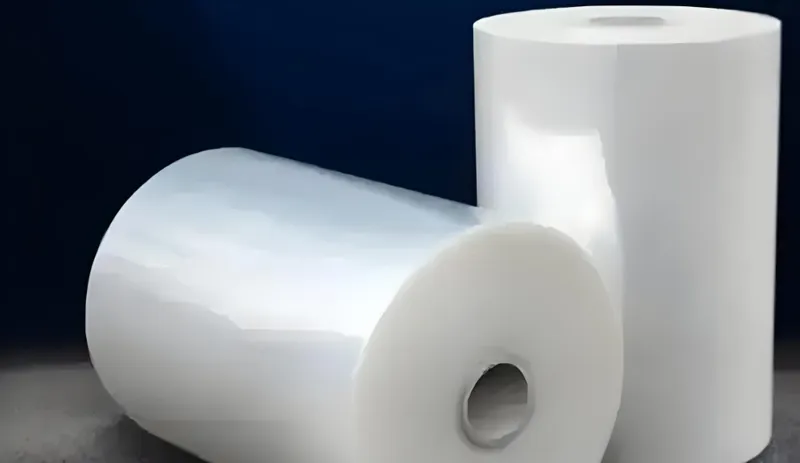In the world of thermoforming, selecting the right material can determine the success of your project. Two widely used thermoplastics, Polycarbonate (PC)1 and Acrylonitrile Butadiene Styrene (ABS), often come into play. But what distinguishes them in the thermoforming process? This comprehensive guide explores their differences, helping you decide which material best suits your manufacturing needs.
Polycarbonate (PC) offers exceptional strength and transparency, perfect for complex, high-impact applications, while ABS provides cost-effective versatility for simpler, opaque parts.
Understanding these distinctions is key to optimizing your thermoforming process2. Whether you need clarity, durability, or affordability, this article will guide you through the nuances of PC and ABS.
PC is more expensive than ABS.True
Due to its superior properties like transparency and impact resistance, PC typically commands a higher price point.
ABS cannot be used for transparent applications.True
ABS is inherently opaque, making it unsuitable for applications requiring light transmission.
- 1. What are Polycarbonate (PC) and Acrylonitrile Butadiene Styrene (ABS)?
- 2. What are the Typical Application Scenarios for PC and ABS in Thermoforming?
- 3. What are the Key Steps in the Thermoforming Process for PC and ABS?
- 4. How Do You Choose Between PC and ABS for Thermoforming?
- 5. What are the Related Technologies to PC and ABS in Thermoforming?
- 6. 결론
What are Polycarbonate (PC) and Acrylonitrile Butadiene Styrene (ABS)?
Definitions and Core Principles
- Polycarbonate (PC): A thermoplastic polymer renowned for its strength, toughness, and optical transparency. Known by trade names like Lexan or Makrolon, PC excels in applications needing impact resistance and light transmission, such as safety shields, medical device housings, and automotive parts.

- Acrylonitrile Butadiene Styrene (ABS)3: A terpolymer made from acrylonitrile, butadiene, and styrene, ABS balances strength, durability, and ease of processing. Opaque by nature, it’s a favorite for affordable, versatile items like toys, electronics, and automotive interiors.
Both materials are thermoplastics, meaning they can be heated, molded, and cooled into new shapes via thermoforming. However, their unique properties lead to different behaviors during the process.

Classification
-
Process Perspective: Both PC and ABS are thermoformed by heating plastic sheets and shaping them with molds. PC demands precise temperature control due to its higher softening point, while ABS is more forgiving.
-
Material Perspective: PC offers transparency, high impact resistance, and excellent formability, ideal for intricate designs. ABS, opaque with moderate impact resistance, suits simpler shapes.
-
Application Perspective: PC is favored for high-end uses like optical devices and safety equipment, while ABS dominates in cost-sensitive, mass-produced goods.
Thermoforming with PC requires less precise temperature control than with ABS.False
Actually, PC demands more precise temperature control due to its higher softening point and sensitivity to overheating.
What are the Typical Application Scenarios for PC and ABS in Thermoforming?
PC Applications
Polycarbonate shines in applications requiring transparency and durability:

-
Safety shields and guards
-
Medical device housings
-
Automotive headlight lenses
-
Optical lenses and displays
Its clarity and strength make it a staple in industries like healthcare and automotive.
ABS Applications
ABS is commonly used in:
-
Toys (e.g., LEGO bricks)
-
Appliance components (e.g., vacuum cleaner housings)
-
Automotive interior trim
-
Consumer electronics casings
Its affordability and finishing versatility make it ideal for consumer goods.

Pros and Cons Comparison
Here’s how PC and ABS stack up in thermoforming4:
| Aspect | PC Pros | PC Cons | ABS Pros | ABS Cons |
|---|---|---|---|---|
| Impact Resistance5 | Exceptional, ideal for safety-critical uses | Higher cost than ABS | Good, suitable for general use | Lower than PC, less suited for high-impact needs |
| Transparency6 | Naturally transparent, great for optics | Prone to scratching, may need coatings | Opaque, perfect for painted finishes | Not viable for light transmission |
| Processability | High formability, supports complex shapes | Needs precise temperature control | Easier to process, wider temperature range | Limited formability, suits simpler designs |
| Cost7 | Higher cost, justified by performance | - | Cost-effective, budget-friendly | - |
| Chemical Resistance | Moderate, varies by grade | - | Moderate, resists acids and alkalis | Limited resistance to some solvents |
PC excels where clarity and strength are paramount, while ABS is the go-to for cost-effective, simpler projects.
PC is better suited for complex shapes than ABS.True
PC’s higher formability allows for deeper draws and more intricate designs compared to ABS.
What are the Key Steps in the Thermoforming Process for PC and ABS?
The thermoforming process for PC and ABS follows these steps, with variations in parameters:

-
Pre-drying: Both materials require drying (e.g., 250°F for 4-6 hours) to remove moisture and prevent defects like bubbling.
-
Heating: PC heats to 350°F–375°F (177°C–190°C), ABS to 320°F–374°F (160°C–190°C). PC’s higher softening point necessitates elevated temperatures.
-
Forming: The heated sheet is shaped over a mold using vacuum or pressure. PC handles complex forms better, while ABS suits shallower designs.

-
Cooling: Controlled cooling sets the shape. PC’s higher shrinkage (0.7–1%) needs more attention than ABS’s (0.4–0.8%).
-
Trimming and Finishing: Excess is trimmed, with PC often polished for clarity and ABS painted or textured.
| Process Step | PC Parameters | ABS Parameters |
|---|---|---|
| Pre-drying | 250°F for 4-6 hours | Similar to PC |
| Heating Temperature | 350°F–375°F | 320°F–374°F |
| Shrinkage Rate | 0.7–1% | 0.4–0.8% |
| Formability | High (100–150% elongation) | Moderate (20–50% elongation) |
Material Compatibility Explanation
-
Formability: PC’s elongation (100–150%) supports deep draws, while ABS’s (20–50%) limits it to simpler shapes.
-
Shrinkage Impact: PC’s higher shrinkage requires precise design adjustments; ABS’s lower rate simplifies this.
-
Surface Finish: PC’s transparency needs scratch protection, while ABS’s opaque surface excels with finishes.
ABS requires higher forming temperatures than PC.False
Actually, PC requires higher forming temperatures due to its higher softening point.
How Do You Choose Between PC and ABS for Thermoforming?
Design Checklist
-
For PC:
-
Pre-dry at 250°F for 4-6 hours.
-
Account for 0.7–1% shrinkage8.
-

-
Heat to 350°F–375°F, adjusting for complexity.
- Protect against scratches (e.g., coatings).
-
For ABS:
-
Pre-dry to remove moisture.
-
Design for 0.4–0.8% shrinkage.
-
Use painting or texturing for aesthetics.
-
Keep designs simple due to lower formability.
-
Process Selection Decision-Making
Follow this decision tree:
-
Need transparency? Yes → PC; No → Next.
-
High impact resistance9 critical? Yes → PC; No → Next.
-
Cost a priority? Yes → ABS; No → Next.
-
Complex shapes required? Yes → PC; No → ABS.
This ensures your choice aligns with project goals.
PC is always the better choice for thermoforming.False
While PC offers superior properties in some areas, ABS is more cost-effective and easier to process for many applications.
What are the Related Technologies to PC and ABS in Thermoforming?
- Other Thermoforming Materials: Alternatives like PET, PP, PS, and PVC offer unique properties for specific needs.

-
Complementary Processes: Injection molding and extrusion suit different production scales or geometries.
-
Upstream and Downstream Technologies: Material synthesis, additives, and post-processing (e.g., painting) enhance outcomes.
Exploring these can refine your thermoforming strategy10.
결론
Choosing between PC and ABS in thermoforming hinges on understanding their differences. PC’s strength and clarity suit high-end, complex applications, while ABS’s affordability and ease of use fit simpler, cost-sensitive projects. By weighing transparency, impact resistance, formability, and cost, you can select the ideal material. Apply these insights to elevate your manufacturing results.
-
Explore the benefits of Polycarbonate (PC) in thermoforming to understand its strength and transparency for high-impact applications. ↩
-
Understanding the thermoforming process is crucial for optimizing material selection and achieving desired product outcomes. ↩
-
Learn how ABS stands out among thermoplastics for its cost-effectiveness and versatility in various applications. ↩
-
Learn about thermoforming techniques to grasp how materials like PC and ABS are shaped for various applications. ↩
-
Understanding the impact resistance of materials is crucial for safety-critical applications. Explore this link to learn more about their differences. ↩
-
Transparency is vital for applications requiring light transmission. Discover the differences between PC and ABS in this informative resource. ↩
-
Cost considerations are essential for project budgeting. This link will provide insights into the financial aspects of using PC versus ABS. ↩
-
Understanding shrinkage rates is crucial for accurate design and production in thermoforming. Explore this link for detailed insights. ↩
-
Understanding the benefits of high impact resistance can help you choose the right materials for your projects, ensuring durability and performance. ↩
-
Exploring strategies for thermoforming can enhance your production efficiency and material selection, leading to better project outcomes. ↩









